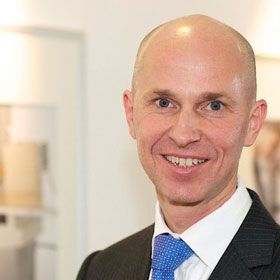Bringing Benefits To the Patient and the Care Provider
Over the last 30 years, the technological advances and increased use of minimally invasive therapy have already helped create breakthroughs for cardiac patients. For me, the big success stories are the evolution of balloon therapy, stenting, drug-eluting stents and now bioresorbable scaffolds that give the temporary mechanical support needed for healing the coronary artery.

Another important breakthrough is the use of smart guide wires that measures ischemia (when the heart muscle doesn’t receive enough oxygen) functionally instead of just visually. Fractional flow reserve (FFR) helps decide which patients are suitable candidates for percutaneous coronary intervention (PCI). With FFR, the evidence is clear: it reduces the number of stents placed and prevents the over-therapy of patients, which may enhance patient care and help manage costs in the healthcare system.
Another innovation is the combination of angiography with ultrasound. Although still not widely utilized in an integrated fashion, fusion imaging of ultrasound and X-ray provides a visualization of your devices with X-ray and a high quality image of the soft tissue with ultrasound. This combination then provides a unique view of the procedure and what steps interventional cardiologists need to take next. This technique shows to be beneficial in structural heart procedures.
These are obviously huge steps forward, and the benefits they bring are just as apparent. For patients, it helps to improve outcomes in terms of quality of life, life expectancy, a reduction in complications, shorter hospitalization and the increased comfort from the use of minimally invasive procedures.
And for physicians? Interventional cardiologists perform many procedures, standing in a lab wearing a lead apron for long periods of time. It can be quite a physical job, so technology that guides and confirms treatment with a low X-ray dose may also enhance their and their staff’s experience. Other technologies, such as robotic technologies and alternative devices, have the potential to further reduce ionizing radiation exposure to the operator. Hopefully, one day, we will have technology that allows stent placement without wearing lead, without radiation and with less contrast for the patient.

Enabling Adoption
Adoption of available technology, like FFR, is still low worldwide. Despite revascularization guidelines recommending the use of FFR to demonstrate ischemia where there is uncertainty, in 2012 only 6% of PCI cases had FFR results beforehand. Many physicians continue to rely on angiography alone, sometimes referred to as the ‘oculostenotic reflex,’ despite being found to be less effective in several classes of patients. So to continue at pace, we need to create an environment that encourages the implementation of technology.
One step is the development of integrated solutions that streamline workflows and make procedures easier. Most cath labs contain a large number of devices, each with different wires and user interfaces. Behind all that hardware are different databases. They’re currently not connected and require multiple entries of data like the patients’ name and vitals – increasing the potential for human error. Integrated solutions will help streamline this workflow, making it efficient for a physician to perform a procedure and sign off on a clinical report.
Without clear evidence of the clinical and economic benefits, technology has no place in today's world. Therefore, another important cog in the engine of adoption is credible clinical evidence to show the value of new technologies. This is an area that Philips is investing in, with more clinical trials to prove that our solutions enhance patient care, speed up procedures, lower cost – or do any combination of these things.

Philips is committed to improving people’s lives, both patients and care providers. One aim is to lower the barriers to adoption of beneficial technologies and to look for new breakthroughs. Join us on this journey.
See more on Philips’ cardiology solutions.

Follow Ronald on LinkedIn here
















